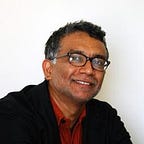This Is What It’s Like To Be At War With Your Body
The compulsion to be free of a limb is no imaginary illness
This wasn’t the first time that David had tried to amputate his leg. When he was just out of college, he’d tried to do it using a tourniquet fashioned out of an old sock and strong baling twine.
David locked himself in his bedroom at his parents’ house, his bound leg propped up against the wall to prevent blood from flowing into it. After two hours the pain was unbearable, and fear sapped his will.
Undoing a tourniquet that has starved a limb of blood can be fatal: injured muscles downstream of the blockage flood the body with toxins, causing the kidneys to fail. Even so, David released the tourniquet himself; it was just as well that he hadn’t mastered the art of tying one.
Failure did not lessen David’s desire to be rid of the leg. It began to consume him, to dominate his awareness. The leg was always there as a foreign body, an impostor, an intrusion.
He spent every waking moment imagining freedom from the leg. He’d stand on his “good” leg, trying not to put any weight on the bad one. At…
